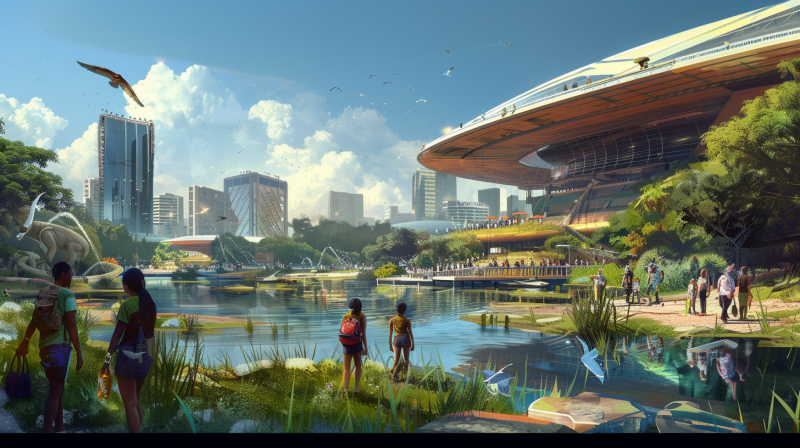Baltimore’s most iconic public space — the Inner Harbor — may soon be a thing of the past, as the City Council fast-tracks a plan for MCB Real Estate to build infinitely high luxury apartments at Harborplace. Should citizens demand the Inner Harbor BMORE?
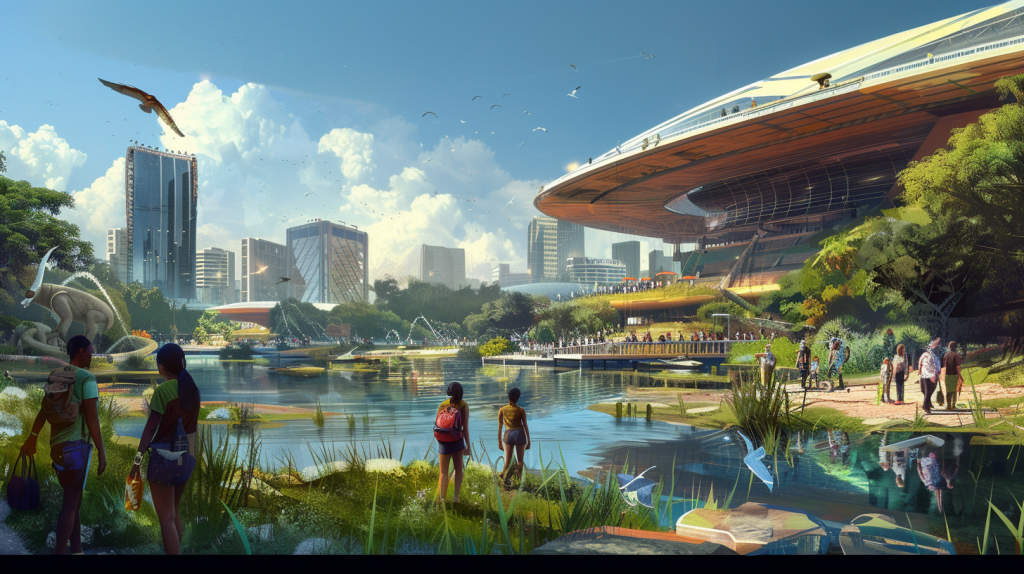
Passionate Baltimoreans have done it before: in 1969, Fell’s Point residents saved the neighborhood from annihilation by successfully petitioning for designation in the National Register of Historic Places. And now Baltimore can do it again: with 10,000 signatures in support of the Inner Harbor, residents can force the local government to seek federal protection for the Inner Harbor by way of Charter Amendment.
What if the city expanded the National Aquarium into a National Park? In the words of Harborplace visionary, James Rouse, “Cities were meant to be gardens in which to grow beautiful people.”
Is an “Inner Harbor National Park” even possible?
At first glance, the Inner Harbor seems an unlikely place for a National Park: it’s a small area in the heart of an urban tourist hub that pales in comparison to the size and grandiose of places like Yellowstone and Zion.
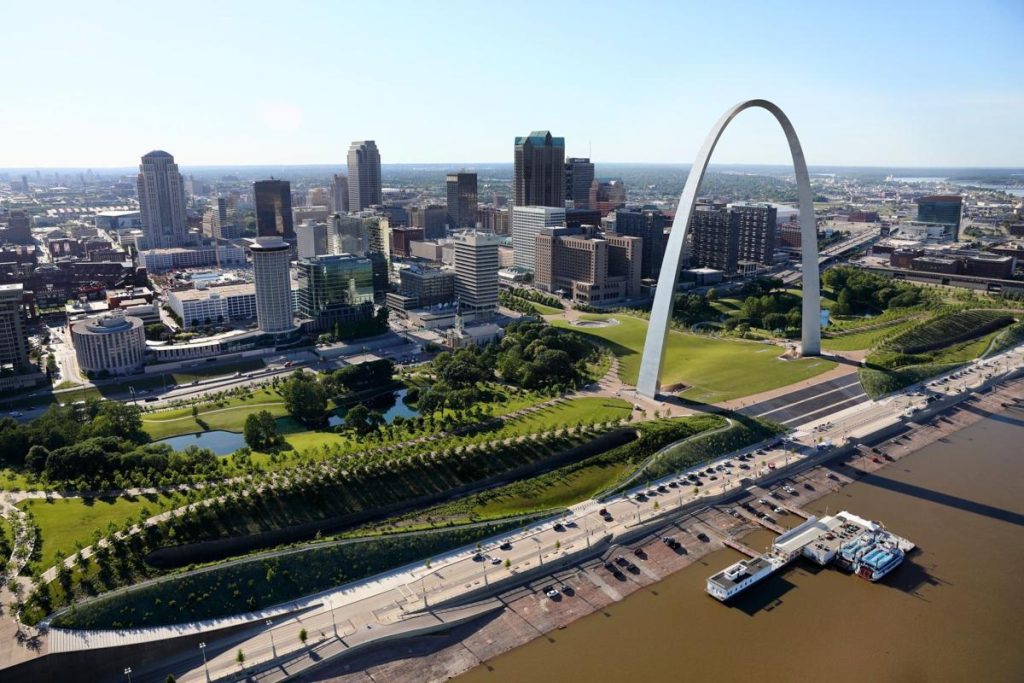
But guess what? An urban tourist hub of less than 100 acres has already become a National Park: Gateway Arch National Park in St. Louis.
The city of St. Louis achieved this unlikely feat by focusing on and promoting the site’s merits as a unique resource of national value that deserves protection. And that’s exactly what Baltimoreans should do: force their government to recognize and protect the value and potential of the Inner Harbor.
Whether achieving full blown National Park status, being designated as another National Park Service unit, becoming a National Historic Landmark, or winning protection on the National Register of Historic Places (even if only for its recent significance); the City of Baltimore should demand that the Inner Harbor become more than a money grab.
And if they won’t do that willingly, Baltimore’s citizens should force their hand.
The Gateway to Parkhood
Using Gateway Arch National Park as an example of what’s possible, we can shed light on the path to parkhood for Baltimore’s Inner Harbor.

Here’s a timeline of how it happened in St. Louis:
- 1935 – Inspired by calls to revitalize the St. Louis riverfront and commemorate westward expansion, President Roosevelt signed an executive order to establish the Jefferson National Expansion Memorial.
- 1947 – A national design competition is won by architect Eero Saarinen.
- 1963 – Construction of the Gateway Arch begins.
- 1965 – The Arch is completed, becoming the tallest man-made monument in the Western Hemisphere.
- 1966 – The Arch is designated as a National Historic Landmark.
- 2000s – Aging facilities spur public outcry to reimagine the surrounding parkland to better connect the Arch to downtown St. Louis and the Mississippi Riverfront.
- 2013 – CityArchRiver (a public-private partnership) is initiated to revitalize the Arch grounds, museum, and riverfront.
- 2018 – Congress passes law to recognize Gateway Arch National Park, signed by President Donald Trump.
It wasn’t easy — in fact, it took decades — but through hard work and collaboration, St. Louis joined public and private stakeholders to craft a shared vision that became a reality.
Much like The Arch in 1965, Baltimore’s Harborplace was celebrated as a national symbol of urban renewal when it was completed in 1980. Over time, both faced aging infrastructure, changing consumer preferences, competition, and decline. Both cities recognized the urgent need for revitalization. But only one City’s government has done something about it.
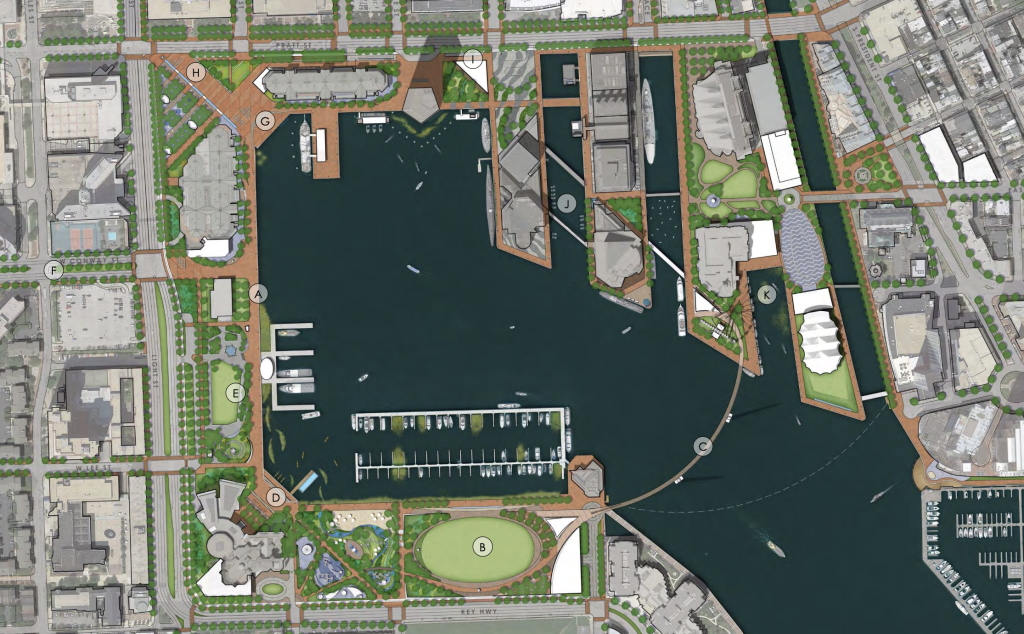
Baltimore needs its own “CityHarborRiver” public-private partnership to underscore the importance of innovation, investment, and community engagement in reimagining, restoring, and revitalizing its decaying urban waterfront for future generations. It existed for Harborplace in the form of “Charles Center Inner Harbor management” and much of the groundwork has already been laid by Waterfront Partnership.
The Inner Harbor’s National Significance
The parallels to St. Louis are uncanny, but Baltimore’s Inner Harbor is a unique and one-of-a-kind destination that deserves its own protection. It represents the intersection of past and present, environment and industry, commerce and community, and so much more.
The Inner Harbor is historically, culturally, environmentally, scientifically, and recreationally significant on a national level.
Historical & Cultural Significance

The evolution of the Inner Harbor reflects the city’s adaptability and continued strategic importance.
- Maritime Commerce: The Inner Harbor, pivotal in Baltimore’s economic development, thrived as a center for maritime commerce through the 18th and 19th centuries. Its strategic location facilitated extensive trade networks, marking Baltimore as a vital port in the evolving landscape of American maritime activity.
- Civil War: the first bloodshed of the Civil War was on Pratt Street, along the Inner Harbor’s northern boundary. Known as the Pratt Street Riot (1861), it reflects Baltimore’s strategic importance in the complex loyalties that divided the city and country, illustrating how history may look back favorably on federal intervention.
- War of 1812: During the 1814 Battle of Baltimore, which inspired Francis Scott Key to write “The Star-Spangled Banner”, Federal Hill served as a lookout point to protect the Inner Harbor’s merchant ships from coming and going safely.
- Historic Ships: The harbor is now home to several historic vessels, including the USS Constellation, showcasing Baltimore’s maritime heritage.
- Harborplace: these commercial pavilions marked a pivotal moment in urban redevelopment globally, showcasing how post-industrial waterfronts could be revitalized for economic and recreational purposes. Harborplace became a model for similar projects worldwide, blending Baltimore’s rich history with new commercial and cultural offerings.
The best part of the Harborplace pavilions? Their size and scope were intentionally limited, allowing them to be razed and reimagined for the maximum enjoyment of future generations.
If MCB Real Estate gets its way, residential skyscrapers will prevent the Inner Harbor from continuing its legacy of constantly adapting and evolving – for public use – across generations. We’ll be saddled for centuries with skyscrapers that do little more than rake in big bucks for a private company. Now is not the time to mortgage Baltimore’s future.
Natural & Scientific Significance
The Inner Harbor is part of the Chesapeake Bay, the largest estuary in the United States, showcasing diverse aquatic and terrestrial ecosystems.
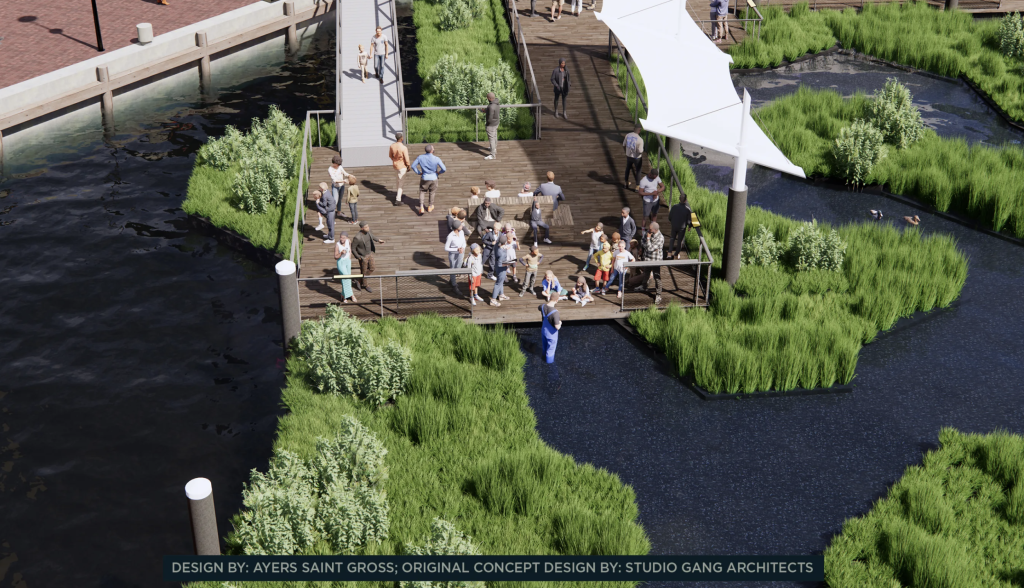
However, it’s also known for its pollution challenges, which have sparked extensive cleanup and conservation efforts. These initiatives aim to restore the harbor’s water quality and support the health of its marine and shoreline habitats, demonstrating the complex relationship between urban development and environmental stewardship. As an example, the Chesapeake Bay provides 500 million pounds of seafood each year, but oyster harvests have fallen to less than 1% of historic levels (a problem the Oyster Recover Partnership is working on).
Anchored by the National Aquarium and Maryland Science Center, the Inner Harbor is uniquely positioned to become a global hub of environmental innovation and rehabilitation. Baltimore can once again create a global model for urban waterfront revitalization that balances commerce and conservation. With federal support, we can follow in the footsteps of Frederick Douglass, educating and leading our nation’s youth to foster and steward communities, rather than exploit and extract from them.
There is no shortage of organizations that would love to see a resurgence in the Inner Harbor ecosystem, signaling brighter days ahead for the entire Chesapeake Bay. Stakeholders include Waterfront Partnership, Living Classrooms, Blue Water Baltimore, Chesapeake Bay Foundation, Chesapeake Bay Trust, Chesapeake Conservancy, Maryland Department of Natural Resources, and the Environmental Protection Agency.
And we could never forget our beloved Trashwheel Family!
Recreational Significance
After The Rouse Company completed Harborplace, Baltimore became a worldwide tourist destination, with the American Institute of Architects declaring it “one of the supreme achievements of large-scale urban design and development in U.S. history.”

Even as activity wanes, the Inner Harbor serves as the highlight of the Waterfront Promenade, a visionary 8-mile pedestrian walkway dating back to the 1960s. It allows for an uninterrupted stroll, jog, or bike ride that connects some of the city’s most vibrant neighborhoods. Those pedestrian jaunts often culminate at one of the Harbor area’s most notable cultural destinations, from the Convention Center and Camden Yards to Pier Six Pavillion, the World Trade Center, and beyond.
The Inner Harbor is also home to a boatload of water activities (pun intended), from kayaking and paddleboarding to sailing and moor (another pun, I’m on fire). Even more exciting recreational opportunities are on the horizon: for more than a decade, Waterfront Partnership has championed the goal of a swimmable, fishable Harbor through their Healthy Harbor Initiative. It’s finally becoming a reality this year with an event dubbed “Harbor Splash 2024“.
The Cradle of Innovation
The Inner Harbor has always been Baltimore’s cradle of leadership and innovation. Whether fighting against slavery, building the world’s fastest ships, trailblazing international trade routes, or pioneering urban revitalization, the Inner Harbor has a history of challenging the status quo and leading the nation — and world — into the future.
Exciting historic, cultural, educational, and entertainment destinations surround the Inner Harbor, but the hub of recreation and culture it once was has slowly deteriorated. What will bring the renaissance that returns it to glory? What new and innovative ideas will lead Baltimore into the future?
Surely not more expensive high rise apartments… for that we have Harbor East.
How can the Inner Harbor become a National Park?
If you examine the merits of Baltimore’s Inner Harbor, consider the danger it faces, and evaluate the possibility of National Park status based on the NPS designation criteria (PDF), you’ll find that it’s truly deserving.
National Park Requirements
To be considered for National Park designation, the National Park Service (NPS) first requires an area to meet all 4 of the following criteria for National Significance:
- It must be an outstanding example of a particular type of natural or cultural resource.
- It must possess exceptional value or quality in illustrating or interpreting the natural or cultural themes of our Nation’s heritage.
- It must offer superlative opportunities for recreation for public use and enjoyment, or for scientific study.
- It must retain a high degree of integrity as a true, accurate, and relatively unspoiled example of the resource.
Some of the specific examples of cultural and natural sites that qualify include:
- A resource that is associated with events that have made a significant contribution to … or that outstandingly represent the broad national patterns of United States history and from which an understanding and appreciation of those patterns may be gained.
- A resource that is importantly associated with the lives of persons nationally significant in the history of the United States history.
- An outstanding site that illustrates the characteristics of a widespread landform or biotic area that is still widespread.
- A rare remnant natural landscape or biotic area of a type that was once widespread but is now vanishing due to human settlement and development;
- A site that has an invaluable ecological or geological importance benchmark due to an extensive and long-term record of research and scientific discovery.
Collective Synergy
At first glance, the Inner Harbor seems to meet all the criteria and fit some examples, but fails to outrageously impress in any one category. And that’s okay- the Inner Harbor’s merit rests in its collective value and evolution, from Native American establishment through Harborplace redevelopment, and hopefully beyond. The NPS guidelines allow for exactly that scenario:
- A resource with several components that is composed of integral parts of the environment not sufficiently significant by reason of historical association or artistic merit to warrant individual recognition but that collectively composes an entity of exceptional historical or artistic significance, or that outstandingly commemorates or illustrates a way of life or culture.
Suitability & Feasibility
As outlined by the NPS documentation, “an area that is nationally significant also must meet criteria for suitability and feasibility to qualify as a potential addition to the National Park System.”
To be suitable: “an area must represent a natural or cultural theme or type of recreational resource that is not already adequately represented in the National Park System or is not comparably represented and protected for public enjoyment by another land-managing entity. Adequacy of representation is determined on a case-by-case basis by comparing the proposed area to other units in the National Park System for differences or similarities in the character, quality, quantity, or combination of resources, and opportunities for public enjoyment.”
To be feasible: “an area’s natural systems and/or historic settings must be of sufficient size and appropriate configuration to ensure long-term protection of the resources and to accommodate public use. It must have potential for efficient administration at a reasonable cost. Important feasibility factors include land ownership, acquisition costs, life cycle maintenance costs, access, threats to the resource, and staff or development requirements.”
When you measure the potential of an Inner Harbor National Park against these criteria, you could easily argue that it passes each test with flying colors. The case can be made, but Baltimore City and its stakeholders must be willing to make and promote that case with decisive fervor.
Who is up for the challenge?
How Much Would It Cost to Transform the Inner Harbor into a National Park compound?
To develop the Inner Harbor into a comprehensive site worthy of National Park status, substantial local, state, and federal funds would be needed. These funds could be pooled from a variety of sources:
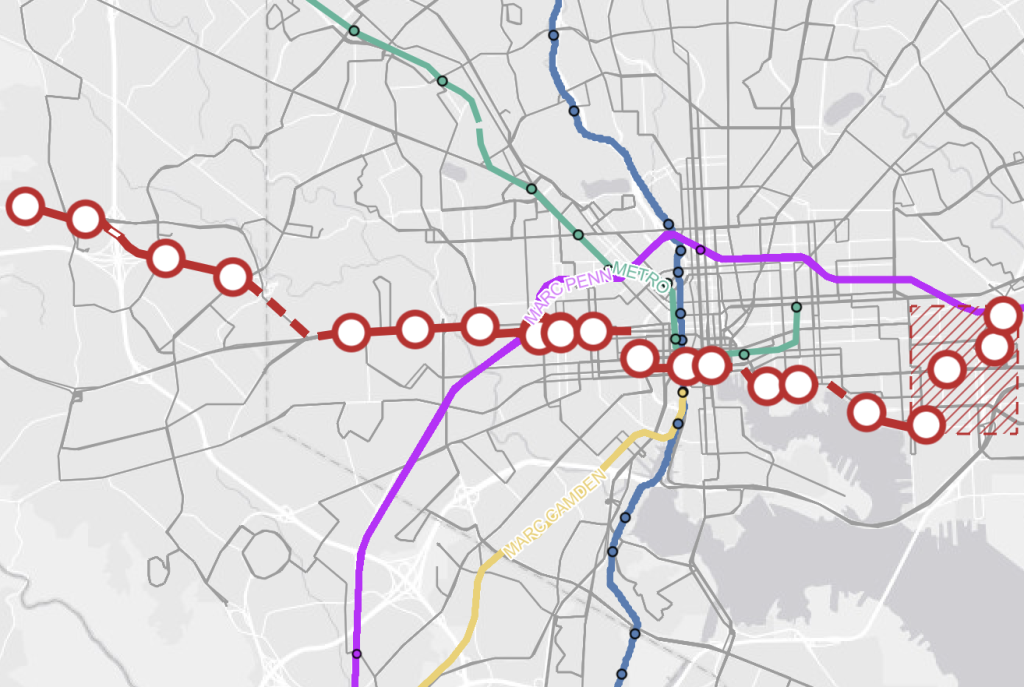
- Baltimore City is already expected to spend $400M to support MCB Real Estate in developing the area surrounding Harborplace. Those funds should be invested into a vision that residents support and the public enjoys.
- The State of Maryland has already dedicated $67.5M to support improvements to redevelop Harborplace.
- MCB has dedicated $500M to their initial plan. With collaborative public-private partnerships in place, there’s no reason a different plan that incorporates a National Park couldn’t equally encourage MCB to invest that amount towards a different, more novel approach.
- The Great American Outdoor Act provides the NPS with $1.2B/year for 5 years to make significant improvements to National Park areas. The Inner Harbor is already within the Baltimore National Heritage Area and could be deserving of a portion of these funds. The NPS also provides funds to non-federal entities to “undertake projects with a distinct public purpose through financial assistance”.
- The Red Line was previously due $900M in federal funds but was canceled by then Maryland Governor Larry Hogan in 2015. In 2023, Governor Wes Moore promised to resurrect the project and recover federal funding. All Red Line plans include a stop near the Inner Harbor, which could be leveraged to support nearby infrastructure and create a welcoming plaza of next generation transportation.
- Baltimore City has owned and operated the failing Hilton Baltimore hotel for decades, wasting hundreds of millions in taxpayer dollars in the process. The city could sell the hotel and use the proceeds for Inner Harbor redevelopment or even use it as an incentive in cooperation with MCB Real Estate.
As a point of reference, Gateway Arch National Park cost $380M to develop ($159M in public funding, $221M in fundraising). The Arch and transportation system were already there, costing $13M in 1965, equivalent to $120M today. That’s $500M total.
If Baltimore City, Maryland State, and MCB Real Estate maintained their current investment commitments, they’d have nearly $1B in funding to start. The excitement that would surround an Inner Harbor National Park would inevitably attract the attention and investment of many additional public and private partners.
And how quickly would that investment return itself? The National Aquarium alone generates hundreds of millions of dollars each year in economic activity and can serve as a model for a successful public-private partnership. Can you imagine if the entire Inner Harbor were similarly dedicated?
The Inner Harbor should BMORE
Critics of a National Park designation may point out that the area is already surrounded by federally protected landmarks and correctly assert that the Inner Harbor is included in the Baltimore National Heritage Area.
That further highlights the problem: the Inner Harbor is of national significance, its value is being ignored, and it needs to be protected before its lost to “catastrophic investment” forever.
Even the homepage of the Baltimore National Heritage Area overlooks its value, encouraging visitors to “Explore the City Beyond the Inner Harbor,” from the moment they arrive!
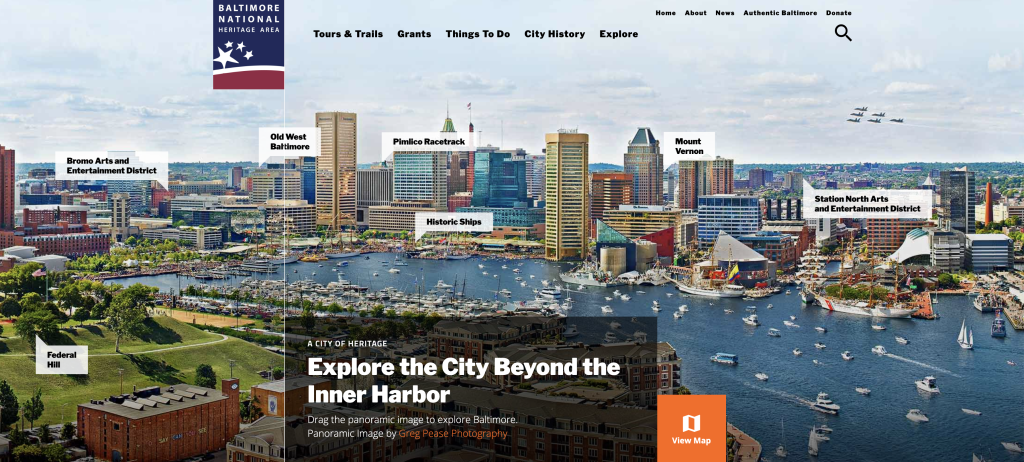
Instead of discarding the Inner Harbor as a lost relic and giving it away to developers without hesitation, we ought to consider the limited amount of truly iconic and centrally located public spaces available to the people of Baltimore.
Further inspiration can be collected from two similar cities on the Eastern Seaboard:
- Independence National Historic Park (Philadelphia) – encompasses Independence Hall and the Liberty Bell, showcasing how urban spaces can preserve and interpret the nation’s founding moments, leveraging them as educational resources and attractions.
- Boston National Historical Park – a network of historical locations throughout the city, connected by “The Freedom Trail”, Boston showcases how many diverse cultural resource can weave together into a single fabric.
Surely the most prominent focal point in all of Baltimore City deserves more than what MCB Real Estate has proposed, and there is no shortage of visionaries willing to share their ideas.
History will look back on this moment in one of two ways:
- A squandered opportunity that highlights the failure and dysfunction of Baltimore City Government
- Another pivotal moment when Baltimore’s citizens, bolstered by federal assistance, united to steer their city towards a brighter future.
Which will it be?
Some Big Ideas
The biggest obstacle that critics of MCB’s plan face is the absence of an exciting, achievable alternative to latch onto. Something is better than nothing, right?
The addition of an Inner Harbor National Park may seem like a long shot, but in the very least it’s a dream that can mobilize the public, surface a world of opportunities, and slow the momentum of a plan that is moving intentionally fast, threatening to derail Baltimore’s future.
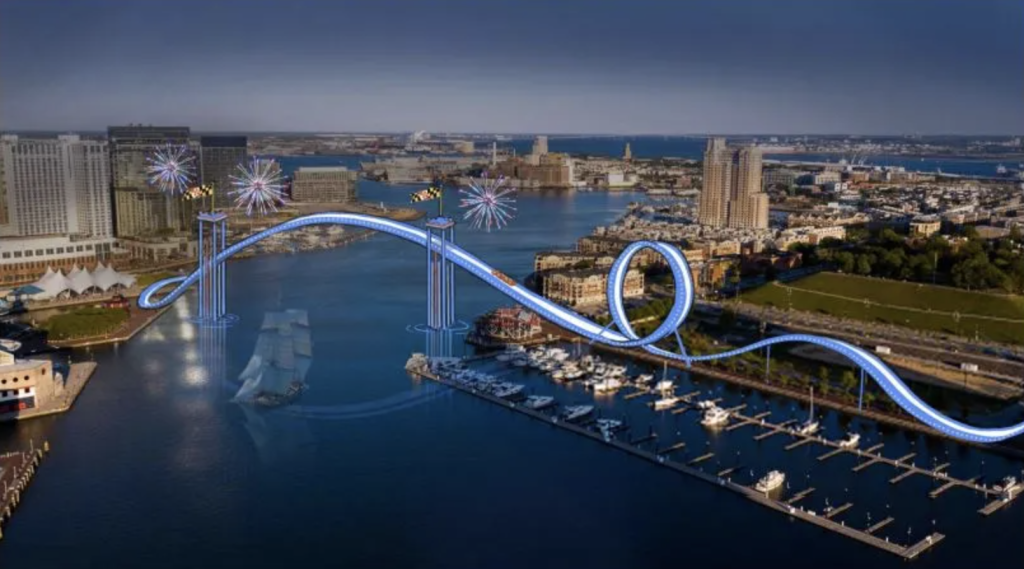
Here are a few additional ideas to consider.
Visionary Concepts
The founder of the American Visionary Arts Museum provided a wealth of outrageously creative concepts for a reimagined Inner Harbor, including:
- Pedestrian Welcome Path with quotes from famous Baltimoreans
- Rollercoaster across the harbor built by Premier Rides
- Public garden tended by masters of urban farming with youth apprentices
- Butterfly pavilion with Koi Fish pond
- Floating clamshell stage for performances
Breaking World Records
MCB Real Estate wants permission to build infinitely tall structures. That’s not inherently bad- Gateway Arch is double the height of the Statue of Liberty! What novel structure(s) could MCB build (and Baltimore support) that better captures Baltimore’s spirit, fits within the scope of the Inner Harbor, and puts the City back on the map in a new way that can make the entire city proud?
Animal Kingdom
The National Aquarium’s architecture is world-renowned and the business it brings the city is undeniable. Why not invite its expansion (or partner with the Baltimore Zoo and other orgaizations) to build additional aquatic/wildlife/nature exhibits that span the Inner Harbor?
Creating a compound dedicated to nature in contrast to our most dense urban setting would celebrate the delicate balance and stark differences that make Baltimore beautiful.
Moving People
As suggested by Ted Rouse, “a people mover, such as a Gondola or a Monorail, to move people from the stadiums and convention center to Harborplace should be included in a master plan. A bridge that would give residents and visitors an opportunity to circumnavigate the Inner Harbor on foot and bicycle should be part of that plan.”
And everything within that circumnavigation could be part of the National Park.
Shipping Them Out
The Historic Ships scattered around the Harbor are wonderful relics of Baltimore history, but would they find a better home in Fell’s Point? The Historic Neighborhood was lauded for its deep waters, helping to make it a ship building juggernaut far more important to Baltimore’s maritime history than the Inner Harbor.
The waters around Jackson Wharf, where ship caulkers like Frederick Douglass once worked on the docks, are now abandoned and empty- sitting idle on the edge of a parking lot. Could these docks be rebuilt as a permanent home for all of the Historic Ships, creating a brand new tourist destination in Baltimore? Could the Inner Harbor areas they formerly occupied be reclaimed and repurposed to better fulfill a cohesive Inner Harbor National Park vision?
Collective Conversation
As Governor Wes Moore said in the initial announcement, “if it’s not a collective conversation, it’s not a real conversation.”
That sounds great, but many suspect the conversation is not real. As reported by BaltimoreFishbowl.com, Mayor Brandon Scott intimated that the MCB deal was a long and secretive process, and MCB Real Estate CEO David Bramble has suggested that if his residential skyscraper plan isn’t approved, he won’t move forward.
What’s the point of a collective conversation if your position is unmovable? Baltimore City Government has a collaboration problem.
A New Mayor with New Ideas
Another way to require a new plan is to elect Thiru Vignarajah as Baltimore’s next Mayor. While current Baltimore City Mayor Brandon Scott has intentionally facilitated MCB Real Estate’s plan to build residential skyscrapers, Thiru has vowed to block that plan and demand a process that benefits the public:
You can support Thiru for Mayor here.
What would you name a National Park built around the Inner Harbor?
The perfect name for an Inner Harbor National Park might be “National Harbor“, but that name is taken- it’s the privately developed census-designated place that features MGM National Harbor.
So what would an Inner Harbor National Park be officially called? Would you even want a National Park in the Inner Harbor? Or would you prefer the immediacy of a Harborplace redeveloped by MCB Real Estate?

Let us know what you think on Facebook, Twitter, and Instagram!

